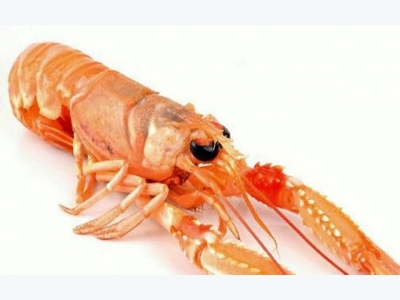Start-up using shellfish to increase shelf life of seafood

CuanTec is able to extract a naturally occurring biopolymer called chitin through a process of biological fermentation. Photo: CuanTech
New process will create a ‘compostable, antimicrobial food packaging’ which could potentially double shelf life of some products.
CuanTec, a blue biotechnology company based in Oban, Scotland, is creating a new antimicrobial, compostable food packaging from the waste of langoustines and other shellfish.
The company claims the packaging ultimately be able to double the shelf life of some seafood products.
Using by products from langoustine processing facilities, namely the shells, CuanTec is able to extract a naturally occurring biopolymer called chitin through a process of biological fermentation. This is then converted into chitosan – its soluble form – which in turn can be manufactured into a flexible film which can extend the shelf life of fresh food.
“We can use the shells of any crustaceans, but for the moment we are using langoustine shell, as it is a useful and easily obtainable raw material especially where we are located,” Cait Murray-Green, CEO of the company, told IntraFish.
By using “core level food technology," CuanTec is interested in looking at the application side, how it can be used in reality “within all stages of fishery to shop."
According to Murray-Green, chitosan has “great properties” including antimicrobial elements, which lends itself to food packaging.
“We have teamed with a couple of rather large scampi processors in and around Ireland and Scotland and we’ll go into production with them in March of next year,” Murray-Green said.
“At the moment at lab scale perfecting our process and then we’ll move up to production scale, working alongside them at the processing sites.”
The process of extracting chitin from shells is not necessarily new, but CuanTec is using biological fermentation processes, while traditionally it has been done with chemistry.
“We are the only company in the world who are at the production scale we are at, using biological methods, and as far as I know there is no one else as a company doing this in a commercial way,” Murray-Green said.
From waste to longer shelf-life
CuanTec takes what would be waste from the processors and turns it into something of higher value.
“What we’re doing is low energy, sustainable, low impact to the environment and circular economy, with zero waste,” Murray-Green said.
The compostable, flexible food packaging – “which looks a bit like clingfilm” – is also antimicrobial, which “helps food last longer."
In the first instance, Murray-Green is hoping to use it for pre-packaged salmon and cod fillets, or other fish fillets, and it is likely to first be seen on the shelves in supermarkets.
“We have done some in lab testing and it gives us great hope that we will see an extension [of shelf life] of an extra day or two," she said.
At the moment if you purchase salmon steaks in a supermarket, you technically need to use them within 24 hours, or at most 36 hours.
“But from what we are seeing in the lab, that can be doubled,” Murray-Green said.
Production at the fisheries sites is expected to begin in March, and this time next year the product could be being used in retailers.
“We are talking to retailers, we are talking to companies who make the film – we still need to partner at that level – and we are getting a very warm response from them," Murray-Green said.
For companies at a global level, being able to get even an extra day on their fresh fish produce “is extremely important."
Eventually, Murray-Green expects her packaging will be used for any perishable food, but initially the focus will be fish.
“Partly because it makes a beautiful circular economy story -- coming from fisheries and back to fisheries -- but also in order to ensure we expand at a rate that is appropriate to our size, and that we can provide the quality and quantity in the right way," she said.
Ultimately, though Murray-Green wants to “be global," and “covering everything."
Salmon feed as an added bonus
During the fermentation process to create the chitin, CuanTec is also left with a “soup” that is high in protein content, and which Murray-Green is also looking at developing into a salmon feed.
“We’ve started investigating how to turn the protein-rich soup into a salmon feed,” she said.
“It is high protein, it also includes the natural colorant which is prized in the salmon business as it turns the flesh pink.”
There is much more development to be done on this side of things, but Murray-Green is confident.
“The idea no waste – to do this with the lowest amount of energy costs, lowest amount of waste,” she said.
“Our goal, with our product, is to work hand in hand with companies from fisheries through to food retailers, to create the new generation of food packaging, respecting high quality food and the environment.”
Related news
 Troubling times for tilapia in the US
Troubling times for tilapia in the US Alex Ko of tilapia and feed giant Grobest told this year's Global Aquaculture Alliance GOAL conference that 2017 has been one of change in the tilapia sector
 Ecuador shrimp farmer Songa boosts tech, efficiency
Ecuador shrimp farmer Songa boosts tech, efficiency The company is introducing new freezing lines and cold systems, and increasing capacity. Ecuador shrimp farmer Songa boosts tech, efficiency
 US refuses entry to 17 antibiotic-laced shrimp imports in September
US refuses entry to 17 antibiotic-laced shrimp imports in September In the first three weeks of September, the US rejected 76 seafood entry lines, of which 17 (22.4%) were of shrimp for reasons related to banned antibiotics.